A fine little figure, only 5 cm (2”) tall, popped out of the earth in late August when metal-detector operator Søren Andersen searched for metal artefacts in a field near Mesinge. The figure is of a man with a beard and a well-groomed pageboy haircut. Its most remarkable feature is an impressive headdress with two “horns”. The figure is from the 8th century and possibly represents the god Odin from Nordic mythology.The 8th century...
[[ This is a content summary only. Vi
✗ Close categories
 Addiction
Addiction
 Apple
Apple
 Arts
Arts
 Asia News
Asia News
 British Airways
British Airways
 Business
Business
 Cars
Cars
 Celebrity
Celebrity
 Christianity
Christianity
 Cinema, Theater & TV
Cinema, Theater & TV
 Conspiracy Theories
Conspiracy Theories
 Coronavirus
Coronavirus
 Ebola
Ebola
 Economy
Economy
 Education
Education
 Electronics
Electronics
 Entertainment
Entertainment
 Environment
Environment
 Fashion
Fashion
 Finance
Finance
 Food
Food
 Funny videos
Funny videos
 Gadgets
Gadgets
 Games
Games
 General News
General News
 Health
Health
 International Crime
International Crime
 Jobs
Jobs
 Lifestyle
Lifestyle
 Military
Military
 Mindfulness
Mindfulness
 Movies
Movies
 Music
Music
 News videos
News videos
 NewsPhoto
NewsPhoto
 Nightlife
Nightlife
 Obituaries
Obituaries
 Olympics
Olympics
 Organized Crime
Organized Crime
 Politics
Politics
 Psychology
Psychology
 Recipes
Recipes
 Royal Family
Royal Family
 Sci-Tech
Sci-Tech
 Science
Science
 Social media
Social media
 Sport
Sport
 Technology
Technology
 Television
Television
 Thames Deckway
Thames Deckway
 Traffic
Traffic
 Travel
Travel
 Trending UK
Trending UK
 UK News
UK News
 UnitedHealth Group Inc.
UnitedHealth Group Inc.
 Weather
Weather
 World News
World News
✗ Close categories
✗ Close categories
✗ Close categories
 Arsenal
Arsenal
 Aston Villa
Aston Villa
 Athletics
Athletics
 Badminton
Badminton
 Baseball
Baseball
 Basketball
Basketball
 Blackburn Rovers
Blackburn Rovers
 Blackpool
Blackpool
 Boxing
Boxing
 Burnley
Burnley
 Cardiff City
Cardiff City
 Champions League
Champions League
 Chelsea
Chelsea
 Cricket
Cricket
 Crystal Palace
Crystal Palace
 Cycling
Cycling
 Darts
Darts
 Everton
Everton
 Formula 1
Formula 1
 Formula 1 - Force India Videos
Formula 1 - Force India Videos
 Formula 1 - Infiniti Red Bull Racing Videos
Formula 1 - Infiniti Red Bull Racing Videos
 Formula 1 - Live Stream & News
Formula 1 - Live Stream & News
 Formula 1 - McLaren Videos
Formula 1 - McLaren Videos
 Formula 1 - Mercedes AMG Petronas Videos
Formula 1 - Mercedes AMG Petronas Videos
 Formula 1 - Sauber F1 Team Videos
Formula 1 - Sauber F1 Team Videos
 Formula 1 - Scuderia Ferrari Videos
Formula 1 - Scuderia Ferrari Videos
 Formula 1 - Scuderia Toro Rosso Videos
Formula 1 - Scuderia Toro Rosso Videos
 Formula 1 - Team Lotus Videos
Formula 1 - Team Lotus Videos
 Formula 1 - Williams Martini videos
Formula 1 - Williams Martini videos
 Fulham
Fulham
 Golf
Golf
 Hockey
Hockey
 Horse Racing
Horse Racing
 Hull City
Hull City
 Ice Hockey
Ice Hockey
 Leicester City
Leicester City
 Liverpool
Liverpool
 Manchester City
Manchester City
 Manchester United
Manchester United
 Middlesbrough
Middlesbrough
 Motorsport
Motorsport
 Norwich City
Norwich City
 Philadelphia Phillies
Philadelphia Phillies
 Premier League
Premier League
 Queens Park Rangers
Queens Park Rangers
 Rally
Rally
 Reading
Reading
 Rowing
Rowing
 Rugby
Rugby
 scarlets rugby
scarlets rugby
 Soccer
Soccer
 Southampton
Southampton
 Stoke City
Stoke City
 Sunderland
Sunderland
 Swansea City
Swansea City
 Swimming
Swimming
 Tennis
Tennis
 Tottenham
Tottenham
 Tour de France
Tour de France
 Volleyball
Volleyball
 WC soccer 2014
WC soccer 2014
 Welsh Rugby Union
Welsh Rugby Union
 West Ham
West Ham
 Wigan Athletic
Wigan Athletic
 Wolverhampton Wanderers
Wolverhampton Wanderers
✗ Close categories
✗ Close categories
✗ Close categories
 ...test
...test
 Aberdeen City
Aberdeen City
 Aberdeenshire
Aberdeenshire
 Antrim
Antrim
 Aylesbury Vale
Aylesbury Vale
 Barking and Dagenham
Barking and Dagenham
 Barnet
Barnet
 Barnsley
Barnsley
 Basildon
Basildon
 Bath and North East Somerset
Bath and North East Somerset
 Belfast
Belfast
 Bexley
Bexley
 Birmingham
Birmingham
 Blackburn with Darwen
Blackburn with Darwen
 Bolton
Bolton
 Bournemouth
Bournemouth
 Bradford
Bradford
 Brent
Brent
 Brighton and Hove
Brighton and Hove
 Bristol
Bristol
 Bromley
Bromley
 Bury
Bury
 Calderdale
Calderdale
 Cambridge
Cambridge
 Camden
Camden
 Cardiff
Cardiff
 Central Bedfordshire
Central Bedfordshire
 Cheshire East
Cheshire East
 Cheshire West and Chester
Cheshire West and Chester
 Cornwall
Cornwall
 County Durham
County Durham
 Coventry
Coventry
 Croydon
Croydon
 Derby
Derby
 Doncaster
Doncaster
 Dudley
Dudley
 Ealing
Ealing
 East Riding of Yorkshire
East Riding of Yorkshire
 Edinburgh
Edinburgh
 Enfield
Enfield
 Essex
Essex
 Gateshead
Gateshead
 Glasgow
Glasgow
 Greater London
Greater London
 Greenwich
Greenwich
 Hackney
Hackney
 Hammersmith and Fulham
Hammersmith and Fulham
 Haringey
Haringey
 Harrow
Harrow
 Havering
Havering
 Herefordshire
Herefordshire
 Hillingdon
Hillingdon
 Hounslow
Hounslow
 Hull
Hull
 Islington
Islington
 Kirklees
Kirklees
 Lambeth
Lambeth
 Leeds
Leeds
 Leicester
Leicester
 Lewisham
Lewisham
 Liverpool
Liverpool
 London
London
 Luton
Luton
 Manchester
Manchester
 Medway
Medway
 Merton
Merton
 Milton Keynes
Milton Keynes
 New Forest
New Forest
 Newcastle
Newcastle
 Newcastle upon Tyne
Newcastle upon Tyne
 Newham
Newham
 North Somerset
North Somerset
 North Tyneside
North Tyneside
 North West
North West
 Northampton
Northampton
 Northern Ireland
Northern Ireland
 Northumberland
Northumberland
 Nottingham
Nottingham
 Oldham
Oldham
 Oxford
Oxford
 Peterborough
Peterborough
 Plymouth
Plymouth
 Portsmouth
Portsmouth
 Redbridge
Redbridge
 Richmond upon Thames
Richmond upon Thames
 Rochdale
Rochdale
 Rotherham
Rotherham
 Salford
Salford
 Sandwell
Sandwell
 Scotland
Scotland
 Sefton
Sefton
 Sheffield
Sheffield
 Shropshire
Shropshire
 Solihull
Solihull
 South East
South East
 South Gloucestershire
South Gloucestershire
 South West
South West
 Southampton
Southampton
 Southend-on-Sea
Southend-on-Sea
 Southwark
Southwark
 St Helens
St Helens
 Stockport
Stockport
 Stockton-on-Tees
Stockton-on-Tees
 Stoke-on-Trent
Stoke-on-Trent
 Sunderland
Sunderland
 Sutton
Sutton
 Swindon
Swindon
 Tameside
Tameside
 Tower Hamlets
Tower Hamlets
 Trafford
Trafford
 Wakefield
Wakefield
 Wales
Wales
 Walsall
Walsall
 Waltham Forest
Waltham Forest
 Wandsworth
Wandsworth
 Warrington
Warrington
 West Midlands
West Midlands
 Westminster
Westminster
 Wigan
Wigan
 Wiltshire
Wiltshire
 Wirral
Wirral
 Wolverhampton
Wolverhampton
 York
York
✗ Close categories
✗ Close categories
✗ Close categories
 Harry Styles
Harry Styles
 Aaron Taylor-Johnson
Aaron Taylor-Johnson
 Adele
Adele
 Ashley Cole
Ashley Cole
 Benedict Cumberbatch
Benedict Cumberbatch
 Billie Piper
Billie Piper
 Boris Johnson
Boris Johnson
 Charlie Hunnam
Charlie Hunnam
 Cliff Richard
Cliff Richard
 David Beckham
David Beckham
 DJ 3lau
DJ 3lau
 DJ Above & Beyond
DJ Above & Beyond
 DJ Afrojack
DJ Afrojack
 DJ Alesso
DJ Alesso
 DJ Aly & Fila
DJ Aly & Fila
 DJ Andrew Rayel
DJ Andrew Rayel
 DJ Angerfist
DJ Angerfist
 DJ Armin Van Buuren
DJ Armin Van Buuren
 DJ Arty
DJ Arty
 DJ ATB
DJ ATB
 DJ Audien
DJ Audien
 DJ Avicii
DJ Avicii
 DJ Axwell
DJ Axwell
 DJ Bingo Players
DJ Bingo Players
 DJ Bl3ND
DJ Bl3ND
 DJ Blasterjaxx
DJ Blasterjaxx
 DJ Borgeous
DJ Borgeous
 DJ Borgore
DJ Borgore
 DJ Boy George
DJ Boy George
 DJ Brennan Heart
DJ Brennan Heart
 DJ Calvin Harris
DJ Calvin Harris
 DJ Carl Cox
DJ Carl Cox
 DJ Carnage
DJ Carnage
 DJ Code Black
DJ Code Black
 DJ Coone
DJ Coone
 DJ Cosmic Gate
DJ Cosmic Gate
 DJ Da Tweekaz
DJ Da Tweekaz
 DJ Dada Life
DJ Dada Life
 DJ Daft Punk
DJ Daft Punk
 DJ Dannic
DJ Dannic
 DJ Dash Berlin
DJ Dash Berlin
 DJ David Guetta
DJ David Guetta
 DJ Deadmau5
DJ Deadmau5
 DJ Deorro
DJ Deorro
 DJ Diego Miranda
DJ Diego Miranda
 DJ Dillon Francis
DJ Dillon Francis
 DJ Dimitri Vegas & Like Mike
DJ Dimitri Vegas & Like Mike
 DJ Diplo
DJ Diplo
 DJ Don Diablo
DJ Don Diablo
 DJ DVBBS
DJ DVBBS
 DJ Dyro
DJ Dyro
 DJ Eric Prydz
DJ Eric Prydz
 DJ Fedde Le Grand
DJ Fedde Le Grand
 DJ Felguk
DJ Felguk
 DJ Ferry Corsten
DJ Ferry Corsten
 DJ Firebeatz
DJ Firebeatz
 DJ Frontliner
DJ Frontliner
 DJ Gabry Ponte
DJ Gabry Ponte
 DJ Gareth Emery
DJ Gareth Emery
 DJ Hardwell
DJ Hardwell
 DJ Headhunterz
DJ Headhunterz
 DJ Heatbeat
DJ Heatbeat
 DJ Infected Mushroom
DJ Infected Mushroom
 DJ John O'Callaghan
DJ John O'Callaghan
 DJ Kaskade
DJ Kaskade
 DJ Knife Party
DJ Knife Party
 DJ Krewella
DJ Krewella
 DJ Kura
DJ Kura
 DJ Laidback Luke
DJ Laidback Luke
 DJ Madeon
DJ Madeon
 DJ MAKJ
DJ MAKJ
 DJ Markus Schulz
DJ Markus Schulz
 DJ Martin Garrix
DJ Martin Garrix
 DJ Merk & Kremont
DJ Merk & Kremont
 DJ Mike Candys
DJ Mike Candys
 DJ Nervo
DJ Nervo
 DJ Nicky Romero
DJ Nicky Romero
 DJ Noisecontrollers
DJ Noisecontrollers
 DJ Oliver Heldens
DJ Oliver Heldens
 DJ Orjan Nilsen
DJ Orjan Nilsen
 DJ Paul Van Dyk
DJ Paul Van Dyk
 DJ Porter Robinson
DJ Porter Robinson
 DJ Quentin Mosimann
DJ Quentin Mosimann
 DJ Quintino
DJ Quintino
 DJ R3hab
DJ R3hab
 DJ Radical Redemption
DJ Radical Redemption
 DJ Richie Hawtin
DJ Richie Hawtin
 DJ Sander Van Doorn
DJ Sander Van Doorn
 DJ Sebastian Ingrosso
DJ Sebastian Ingrosso
 DJ Showtek
DJ Showtek
 DJ Skrillex
DJ Skrillex
 DJ Snake
DJ Snake
 DJ Steve Angello
DJ Steve Angello
 DJ Steve Aoki
DJ Steve Aoki
 DJ Tenishia
DJ Tenishia
 DJ The Chainsmokers
DJ The Chainsmokers
 DJ Tiddey
DJ Tiddey
 DJ Tiesto
DJ Tiesto
 DJ TJR
DJ TJR
 DJ Umek
DJ Umek
 DJ Ummet Ozcan
DJ Ummet Ozcan
 DJ Vicetone
DJ Vicetone
 DJ VINAI
DJ VINAI
 DJ W&W
DJ W&W
 DJ Wildstylez
DJ Wildstylez
 DJ Wolfpack
DJ Wolfpack
 DJ Yves V
DJ Yves V
 DJ Zatox
DJ Zatox
 DJ Zedd
DJ Zedd
 DJ Zomboy
DJ Zomboy
 Emilia Clarke
Emilia Clarke
 Emily Blunt
Emily Blunt
 Gabriella Wilde
Gabriella Wilde
 Gary Lineker
Gary Lineker
 Gemma Arterton
Gemma Arterton
 Gwendoline Christie
Gwendoline Christie
 Hayley Atwell
Hayley Atwell
 Helena Bonham Carter
Helena Bonham Carter
 Imogen Poots
Imogen Poots
 Jason Statham
Jason Statham
 John Terry
John Terry
 Juno Temple
Juno Temple
 Kate Beckinsale
Kate Beckinsale
 Kate Winslet
Kate Winslet
 Keira Knightley
Keira Knightley
 Liam Payne
Liam Payne
 Lily Collins
Lily Collins
 Louis Tomlinson
Louis Tomlinson
 Niall Horan
Niall Horan
 Nicholas Hoult
Nicholas Hoult
 Paul McCartney
Paul McCartney
 Prince William
Prince William
 Ralph Fiennes
Ralph Fiennes
 Richard Branson
Richard Branson
 Robbie Williams
Robbie Williams
 Robert Pattinson
Robert Pattinson
 Rosamund Pike
Rosamund Pike
 Sophie Turner
Sophie Turner
 Theo James
Theo James
 Tom Hardy
Tom Hardy
 Tom Hiddleston
Tom Hiddleston
 Tony Blair
Tony Blair
 Tyree Cooper
Tyree Cooper
 Wayne Rooney
Wayne Rooney
 Zayn Malik
Zayn Malik
✗ Close categories
✗ Close categories
✗ Close categories
 Accountancy
Accountancy
 Administration
Administration
 Advertising
Advertising
 Aerospace
Aerospace
 Agriculture
Agriculture
 Analyst
Analyst
 Animals
Animals
 Antiques
Antiques
 Archaeology
Archaeology
 Architecture
Architecture
 Arts
Arts
 Astrology
Astrology
 Astronomy
Astronomy
 Auto News
Auto News
 Automotive
Automotive
 Aviation
Aviation
 Bakery
Bakery
 Biotechnology
Biotechnology
 Brazil
Brazil
 Cabaret
Cabaret
 Call Centre
Call Centre
 Car News
Car News
 Care
Care
 Catering
Catering
 Charities
Charities
 Chemistry
Chemistry
 Child care
Child care
 Cinema, Theater & TV
Cinema, Theater & TV
 Cleaning Industry
Cleaning Industry
 Coaching
Coaching
 Construction
Construction
 Customs
Customs
 Dairy industry
Dairy industry
 Dance & ballet
Dance & ballet
 Debt collection agencies
Debt collection agencies
 Defense
Defense
 DJ
DJ
 Economy
Economy
 Education & Training
Education & Training
 Electrical
Electrical
 Entrepreneur
Entrepreneur
 Farming & Agriculture
Farming & Agriculture
 Financial
Financial
 Firefighter
Firefighter
 Fisheries
Fisheries
 Flowers
Flowers
 FMCG
FMCG
 Food
Food
 Fruit & Vegetables
Fruit & Vegetables
 Genealogy
Genealogy
 General News
General News
 Government
Government
 Hair stylist
Hair stylist
 Hotel
Hotel
 HR & Recruitment
HR & Recruitment
 ICT
ICT
 Insurance
Insurance
 IT Executive
IT Executive
 Jobs
Jobs
 Justice
Justice
 Landscaper
Landscaper
 Lawyer
Lawyer
 Legal
Legal
 Library
Library
 Logistics
Logistics
 Marketing
Marketing
 Meat industry
Meat industry
 Medical Industry
Medical Industry
 Mining
Mining
 Nurse
Nurse
 Online Trends
Online Trends
 Pharmaceutical Industry
Pharmaceutical Industry
 Pharmacy
Pharmacy
 Physical therapy
Physical therapy
 Police
Police
 Political
Political
 PR Public relations
PR Public relations
 Production & Industry
Production & Industry
 Project Management
Project Management
 Psychology
Psychology
 Public Transport
Public Transport
 Publisher
Publisher
 Real estate
Real estate
 Research & Development
Research & Development
 Restaurant
Restaurant
 Retail
Retail
 Sales & Marketing
Sales & Marketing
 Security
Security
 SEO
SEO
 Shipping
Shipping
 Social work
Social work
 Sustainable Energy
Sustainable Energy
 Teacher
Teacher
 Telecom
Telecom
 Tourism
Tourism
 Traditional Energy
Traditional Energy
 Transport
Transport
 Travel Industry
Travel Industry
 Web Design
Web Design
✗ Close categories
✗ Close categories
-
Viking 'horned' Odin figurine found in Denmark
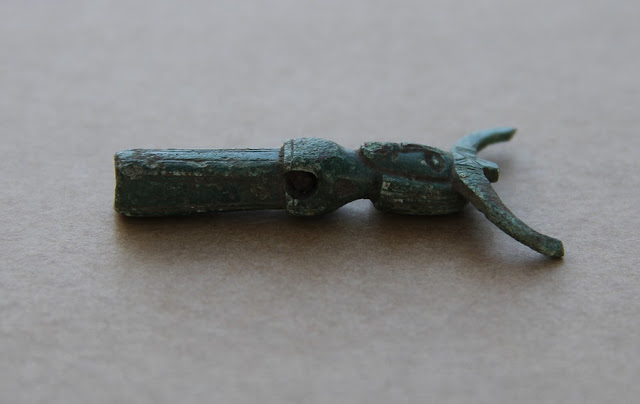
-
Banquet room with preserved frescoes unearthed among Pompeii ruins
via theguardian.com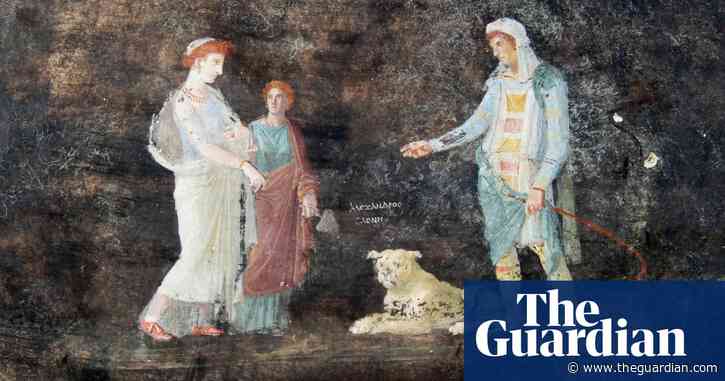 ‘Black room’ with frescoes inspired by Trojan war described as one of most striking discoveries ever made at site in southern ItalyA banquet room replete with well preserved frescoes depicting characters inspired by the Trojan war has been unearthed among the ruins of Pompeii in what has been described as one of the most striking discoveries ever made at the southern Italy archaeological site.The 15-metre-long, six-metre-wide room was found in a former private residence in Via di Nol
‘Black room’ with frescoes inspired by Trojan war described as one of most striking discoveries ever made at site in southern ItalyA banquet room replete with well preserved frescoes depicting characters inspired by the Trojan war has been unearthed among the ruins of Pompeii in what has been described as one of the most striking discoveries ever made at the southern Italy archaeological site.The 15-metre-long, six-metre-wide room was found in a former private residence in Via di Nol -
Great Barrier Reef discovery overturns belief Aboriginal Australians did not make pottery, archaeologists say
via theguardian.com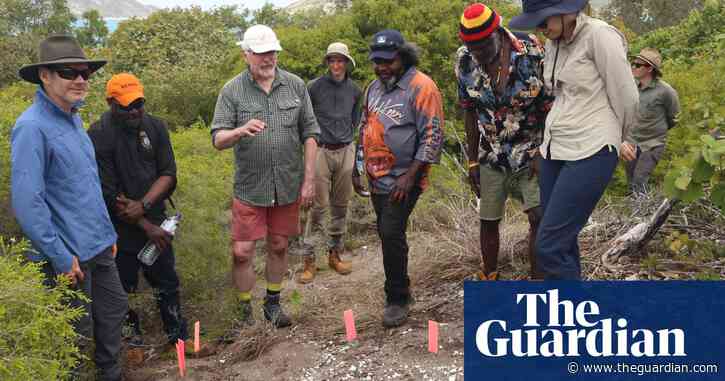 Paper dates 82 pottery pieces found in single dig site at between 3,000 and 2,000 years oldFollow our Australia news live blog for latest updatesGet our morning and afternoon news emails, free app or daily news podcastGroundbreaking archaeological research may have upended the longstanding belief that Aboriginal Australians did not make pottery.A paper published in the Quaternary Science Reviews on Wednesday details the finding of 82 pottery pieces from a single dig site on a Great Barrier Reef
Paper dates 82 pottery pieces found in single dig site at between 3,000 and 2,000 years oldFollow our Australia news live blog for latest updatesGet our morning and afternoon news emails, free app or daily news podcastGroundbreaking archaeological research may have upended the longstanding belief that Aboriginal Australians did not make pottery.A paper published in the Quaternary Science Reviews on Wednesday details the finding of 82 pottery pieces from a single dig site on a Great Barrier Reef -
Christie’s withdraws Greek vases from auction over links to convicted dealer
via theguardian.com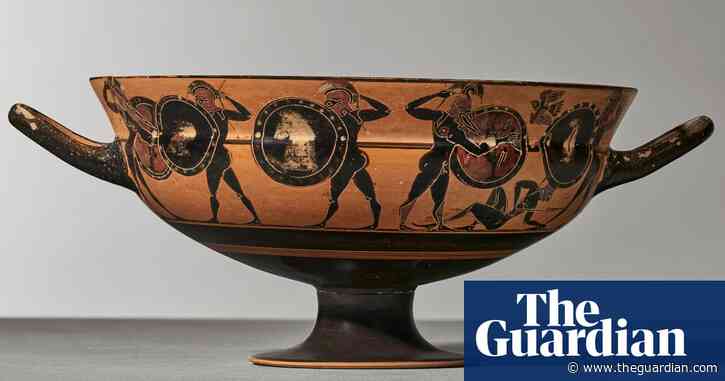 Exclusive: four vases in New York auction traced to Gianfranco Becchina, convicted in 2011 of illegally dealing in antiquitiesChristie’s has withdrawn four ancient Greek vases from Tuesday’s auction after a leading archaeologist discovered that each of them was linked to a convicted antiquities dealer.Dr Christos Tsirogiannis, an affiliated archaeology lecturer at the University of Cambridge and a specialist in looted antiquities and trafficking networks, told the Guardian that there
Exclusive: four vases in New York auction traced to Gianfranco Becchina, convicted in 2011 of illegally dealing in antiquitiesChristie’s has withdrawn four ancient Greek vases from Tuesday’s auction after a leading archaeologist discovered that each of them was linked to a convicted antiquities dealer.Dr Christos Tsirogiannis, an affiliated archaeology lecturer at the University of Cambridge and a specialist in looted antiquities and trafficking networks, told the Guardian that there -
Silver coin boom in medieval England due to melted down Byzantine treasures, study reveals
via theguardian.com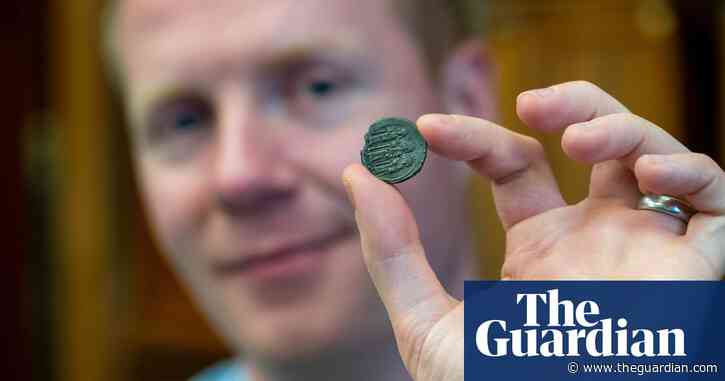 Chemical analysis reveals origin of coinage that stimulated trade and helped fuel development of new towns from seventh centurySeveral decades after the Sutton Hoo burial, starting in about AD660, there was a sudden rise in the number of silver coins in circulation in England, for reasons that have long puzzled archaeologists and historians.The new rush of silver coinage stimulated trade and helped fuel the development of the new towns springing up at the time – but where did it come from?
Chemical analysis reveals origin of coinage that stimulated trade and helped fuel development of new towns from seventh centurySeveral decades after the Sutton Hoo burial, starting in about AD660, there was a sudden rise in the number of silver coins in circulation in England, for reasons that have long puzzled archaeologists and historians.The new rush of silver coinage stimulated trade and helped fuel the development of the new towns springing up at the time – but where did it come from? -
Stephen Mitchell obituary
via theguardian.com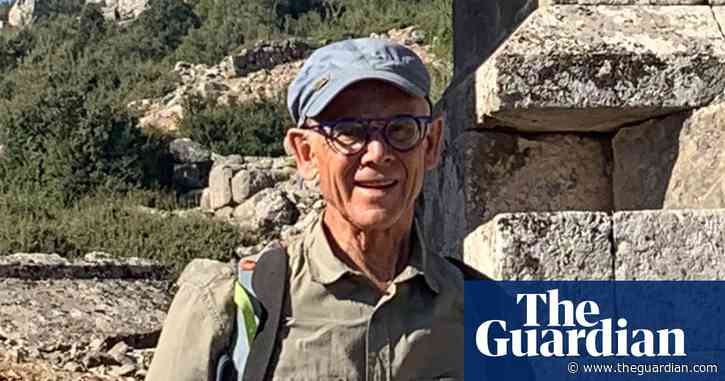 My brother Stephen Mitchell, who has died aged 75, was a historian, archaeological surveyor and interpreter of inscriptions of the Hellenistic, Roman and early Byzantine periods, particularly in what is now Turkey. Equally at home on a hillside as in a lecture theatre, he once discovered three lost cities of the Pisidian people, high in Anatolia’s Taurus mountains, in a single fortnight.Stephen joined the department of classics at Swansea University in 1976, gaining a professorship in 1993
My brother Stephen Mitchell, who has died aged 75, was a historian, archaeological surveyor and interpreter of inscriptions of the Hellenistic, Roman and early Byzantine periods, particularly in what is now Turkey. Equally at home on a hillside as in a lecture theatre, he once discovered three lost cities of the Pisidian people, high in Anatolia’s Taurus mountains, in a single fortnight.Stephen joined the department of classics at Swansea University in 1976, gaining a professorship in 1993 -
Romans, royal ships, and a rural retreat
 Exploring the archaeology of Smallhythe PlaceSmallhythe Place is a timber- framed house set in an intriguing archaeological landscape. For the last three years, archaeologists have been exploring its surroundings; this team photo was taken in 2023. PHOTO: National Trust/Nathalie Cohen
Exploring the archaeology of Smallhythe PlaceSmallhythe Place is a timber- framed house set in an intriguing archaeological landscape. For the last three years, archaeologists have been exploring its surroundings; this team photo was taken in 2023. PHOTO: National Trust/Nathalie Cohen
Smallhythe Place, a National Trust property in Kent, is home to a picturesque timber-framed house with enigmatic origins, while the surrounding landscape preserves unique traces of a medieval shipbuilding centre t -
Excavating the CA Archives – Wiltshire I
 I have now examined the archaeology of every county in Britain bar one – Wiltshire. This was no accident, for I have a confession to make: Wiltshire’s archaeology terrifies me. There is so much of it, so many famous names, such passion aroused. It is the toughest archaeological nut to crack in the United Kingdom, and so I left it to last. To ease my burden, I will split my examination into four different parts, with two columns on the county and two others on Stonehenge and Avebury.
I have now examined the archaeology of every county in Britain bar one – Wiltshire. This was no accident, for I have a confession to make: Wiltshire’s archaeology terrifies me. There is so much of it, so many famous names, such passion aroused. It is the toughest archaeological nut to crack in the United Kingdom, and so I left it to last. To ease my burden, I will split my examination into four different parts, with two columns on the county and two others on Stonehenge and Avebury. -
Current Archaeology 410 – ON SALE NOW
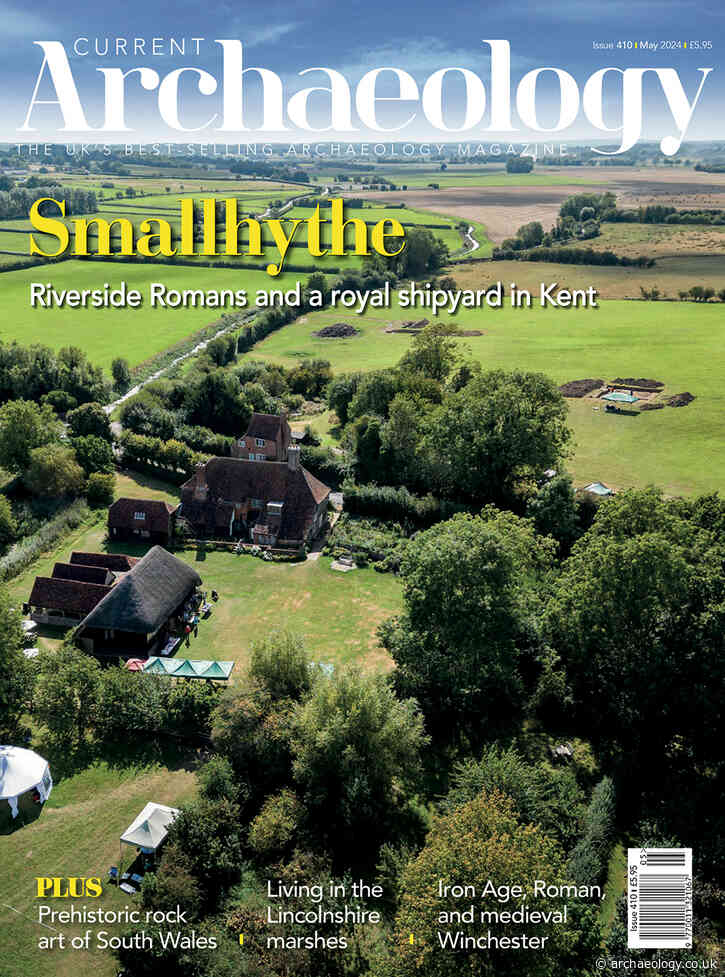 Today, Smallhythe Place in Kent is best known as a bohemian rural retreat once owned by the Victorian actress Ellen Terry and her daughter Edy Craig. As this month’s cover feature reveals, however, the surrounding fields preserve evidence of much earlier activity, including a medieval royal shipyard and a previously unknown Roman settlement.Our next feature comes from the heavy clays of the Humber Estuary, where excavations sparked by the
Today, Smallhythe Place in Kent is best known as a bohemian rural retreat once owned by the Victorian actress Ellen Terry and her daughter Edy Craig. As this month’s cover feature reveals, however, the surrounding fields preserve evidence of much earlier activity, including a medieval royal shipyard and a previously unknown Roman settlement.Our next feature comes from the heavy clays of the Humber Estuary, where excavations sparked by the
construction of an offshore windfarm have opened a -
Explorers unlock the mystery of ‘pirate king’ Henry Avery who vanished after huge heist at sea
via theguardian.com Letter reveals disappearance of 17th century British pirate was tied to William III’s spy ring, Daniel Defoe and an archbishopIn 1695, Henry Avery led his 160-strong crew to pull off the most lucrative heist in pirate history on the high seas, amassing gold, silver, sapphires, emeralds and diamonds worth more than £85m in today’s money. He became the most wanted criminal of his day but vanished without trace and was the stuff of legend for 300 years.Now shipwreck explorers Dr S
Letter reveals disappearance of 17th century British pirate was tied to William III’s spy ring, Daniel Defoe and an archbishopIn 1695, Henry Avery led his 160-strong crew to pull off the most lucrative heist in pirate history on the high seas, amassing gold, silver, sapphires, emeralds and diamonds worth more than £85m in today’s money. He became the most wanted criminal of his day but vanished without trace and was the stuff of legend for 300 years.Now shipwreck explorers Dr S -
‘Truth behind the myths’: Amazon warrior women of Greek legend may really have existed
via theguardian.com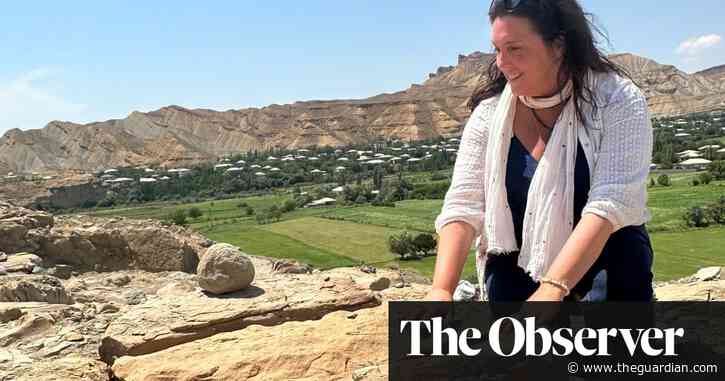 Excavations of bronze age graves have found battle-scarred female archers, says the historian Bettany HughesIn Greek legends, the Amazons were feared and formidable women warriors who lived on the edge of the known world. Hercules had to obtain the magic girdle of the Amazonian queen Hippolyte in one of his 12 labours, and Achilles killed another queen, Penthesilea, only to fall in love with her as her beautiful face emerged from her helmet.These horseback-riding, bow-wielding nomads, who f
Excavations of bronze age graves have found battle-scarred female archers, says the historian Bettany HughesIn Greek legends, the Amazons were feared and formidable women warriors who lived on the edge of the known world. Hercules had to obtain the magic girdle of the Amazonian queen Hippolyte in one of his 12 labours, and Achilles killed another queen, Penthesilea, only to fall in love with her as her beautiful face emerged from her helmet.These horseback-riding, bow-wielding nomads, who f -
Bronze age objects from ‘Pompeii of the Fens’ to go on display
via theguardian.com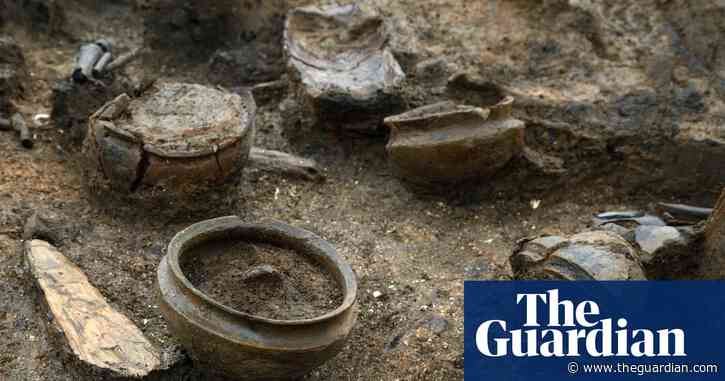 Settlement on stilts dropped into River Nene after a fire nearly 3,000 years ago and was preserved in siltA bronze age settlement built on stilts that dropped “like a coffee plunger” into a river after a catastrophic fire has provided a window on our past lives, according to the archaeologist that led the investigation of the Cambridgeshire site.Must Farm, nicknamed the Pompeii of the Fens, offers “exceptional clarity” because of a combination of charring and waterlogging
Settlement on stilts dropped into River Nene after a fire nearly 3,000 years ago and was preserved in siltA bronze age settlement built on stilts that dropped “like a coffee plunger” into a river after a catastrophic fire has provided a window on our past lives, according to the archaeologist that led the investigation of the Cambridgeshire site.Must Farm, nicknamed the Pompeii of the Fens, offers “exceptional clarity” because of a combination of charring and waterlogging -
Shells from Captain Cook’s final voyage saved from skip
via theguardian.com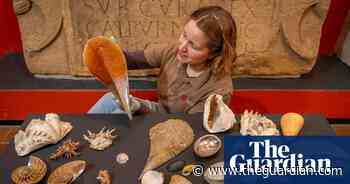 Important collection rediscovered during house-clearing includes numerous rare speciesAn internationally important collection of shells, including specimens from Captain Cook’s final voyage, has been rediscovered 40 years after it was thought to have been thrown into a skip.More than 200 shells have been returned to English Heritage, which will put some of them on display in Northumberland this week. Continue reading...
Important collection rediscovered during house-clearing includes numerous rare speciesAn internationally important collection of shells, including specimens from Captain Cook’s final voyage, has been rediscovered 40 years after it was thought to have been thrown into a skip.More than 200 shells have been returned to English Heritage, which will put some of them on display in Northumberland this week. Continue reading... -
Crypt by Alice Roberts review – resurrecting the past
via theguardian.com From murdered Vikings to an anchorite with syphilis, how human remains are reshaping historyIn 2008 a stash of human bones was discovered in a ditch running under St John’s College, Oxford. They dated from the Anglo-Saxon period and, once reassembled, revealed themselves as the remains of 35 young adult males. The fact that these men had been thrown into a mass grave, with none of the usual pieties, suggested that they were outlaws of one kind or other. At the time England was engaged
From murdered Vikings to an anchorite with syphilis, how human remains are reshaping historyIn 2008 a stash of human bones was discovered in a ditch running under St John’s College, Oxford. They dated from the Anglo-Saxon period and, once reassembled, revealed themselves as the remains of 35 young adult males. The fact that these men had been thrown into a mass grave, with none of the usual pieties, suggested that they were outlaws of one kind or other. At the time England was engaged -
Legion
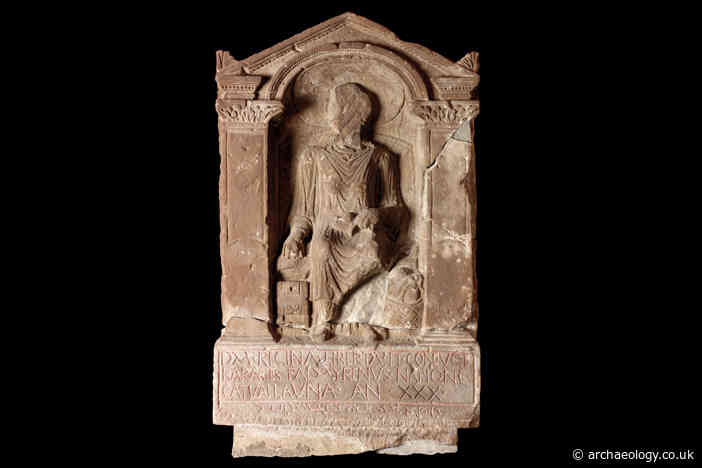 Tracing the impact – and the experiences – of the Roman army in BritainA standard-issue legionary helmet, made of copper-alloy. IMAGE: Trustees of the British Museum
Tracing the impact – and the experiences – of the Roman army in BritainA standard-issue legionary helmet, made of copper-alloy. IMAGE: Trustees of the British Museum
A major new exhibition at the British Museum shows what life was like for the men, women, and children associated with the Roman military machine – and those they encountered through campaign and conquest. Carly Hilts visited to learn more.The Roman army as we know it, has its origins in the reign of the first emp -
Excavating the CA Archives – Gloucestershire
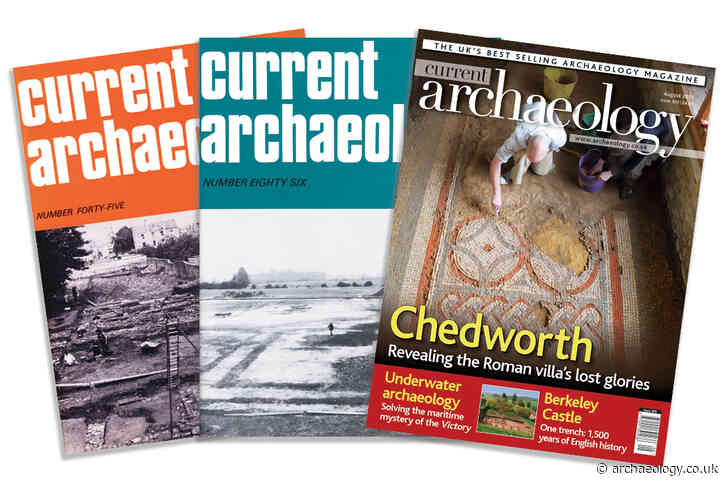 The county of Gloucestershire encompasses a wide variety of landscapes, from the mix of urban and traditional farming communities (now more often dormitory settlements) in the south, by way of the woodland and estuarine zones of the west, to the Cotswold hills of the north and east. It is hard to think of a definitive site or settlement that really sums up the county, and Current Archaeology’s coverage is similarly varied. This is, I should emphasise, a strength, not a weakness.NORTH AND
The county of Gloucestershire encompasses a wide variety of landscapes, from the mix of urban and traditional farming communities (now more often dormitory settlements) in the south, by way of the woodland and estuarine zones of the west, to the Cotswold hills of the north and east. It is hard to think of a definitive site or settlement that really sums up the county, and Current Archaeology’s coverage is similarly varied. This is, I should emphasise, a strength, not a weakness.NORTH AND -
Current Archaeology 409 – ON SALE NOW
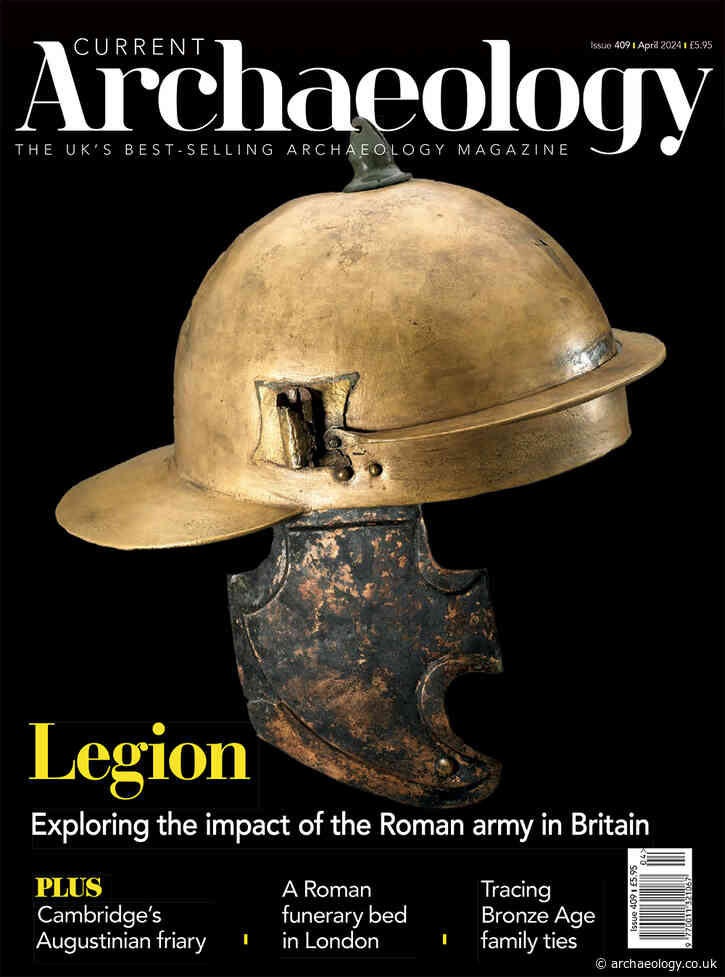 At its peak, the Roman army acted as a military, naval, and police force to about a quarter of the population of the Earth. Our cover feature explores its impact on the inhabitants of Britain – and what life was like for the soldiers and their families who were posted here.If you’ll allow me a moment of nostalgia, our next feature brings a personal pang, as it describes the
At its peak, the Roman army acted as a military, naval, and police force to about a quarter of the population of the Earth. Our cover feature explores its impact on the inhabitants of Britain – and what life was like for the soldiers and their families who were posted here.If you’ll allow me a moment of nostalgia, our next feature brings a personal pang, as it describes the
demolition of a place that hosted one of my first forays into journalism. While working on The Cambridge
Studen -
Current Archaeology 409
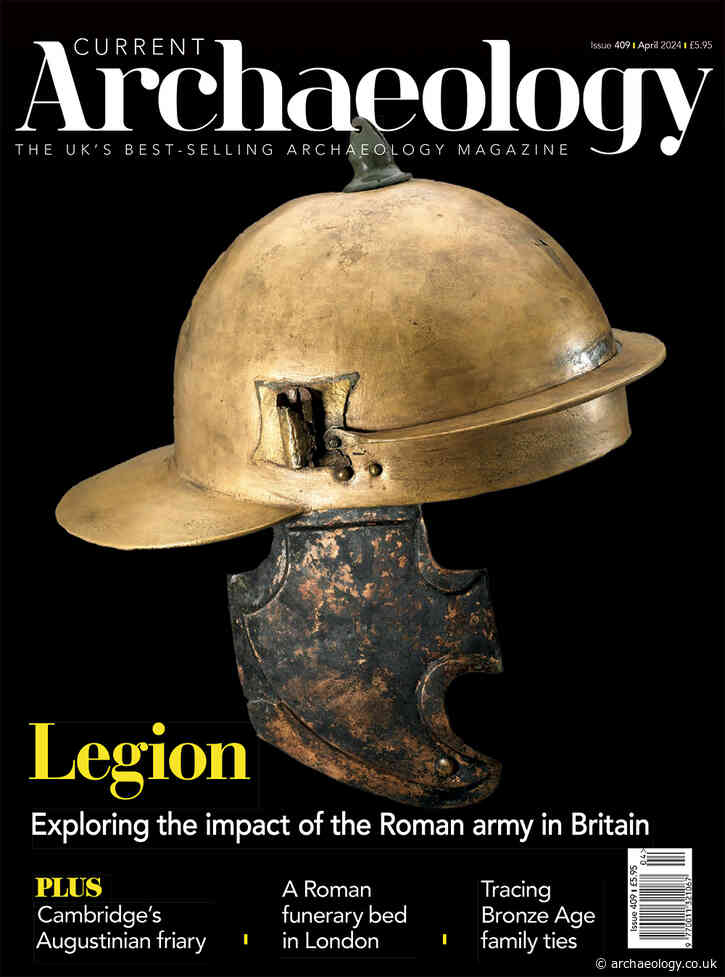 At its peak, the Roman army acted as a military, naval, and police force to about a quarter of the population of the Earth. Our cover feature explores its impact on the inhabitants of Britain – and what life was like for the soldiers and their families who were posted here.If you’ll allow me a moment of nostalgia, our next feature brings a personal pang, as it describes the
At its peak, the Roman army acted as a military, naval, and police force to about a quarter of the population of the Earth. Our cover feature explores its impact on the inhabitants of Britain – and what life was like for the soldiers and their families who were posted here.If you’ll allow me a moment of nostalgia, our next feature brings a personal pang, as it describes the
demolition of a place that hosted one of my first forays into journalism. While working on The Cambridge
Studen -
Ancient stone tools found in Ukraine offer oldest evidence of human presence in Europe
via theguardian.com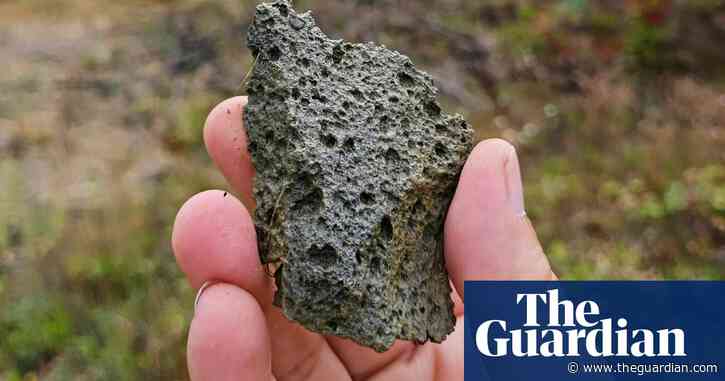 Deliberately fashioned chipped stones date back more than 1m years and may have been used by homo erectusAncient stone tools found in western Ukraine may offer the oldest known evidence of the presence of humans in Europe, according to new research.The chipped stones, deliberately fashioned from volcanic rock, were excavated from a quarry in Korolevo in the 1970s. Archaeologists used new methods to date the layers of sedimentary rock surrounding the tools to more than 1m years old. Continue read
Deliberately fashioned chipped stones date back more than 1m years and may have been used by homo erectusAncient stone tools found in western Ukraine may offer the oldest known evidence of the presence of humans in Europe, according to new research.The chipped stones, deliberately fashioned from volcanic rock, were excavated from a quarry in Korolevo in the 1970s. Archaeologists used new methods to date the layers of sedimentary rock surrounding the tools to more than 1m years old. Continue read -
Battle to save pristine prehistoric rock art from vast new quarry in Norway
via theguardian.com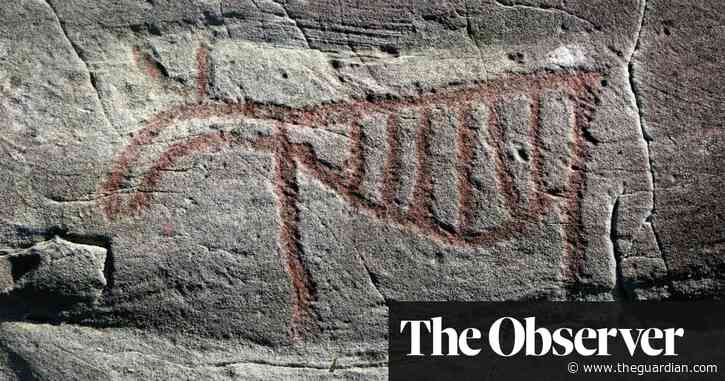 Archaeologists fear more than 2,000 carved figures in Vingen could be destroyed when digging beginsOne of the largest and most significant sites of rock art in northern Europe is under “catastrophic” threat.The Vingen carvings, in Vestland county, Norway, are spectacular, and include images of human skeletons and abstract and geometric designs. Even the hammer stones, the tools used by the ancient artists to create their compositions, have survived. Continue reading...
Archaeologists fear more than 2,000 carved figures in Vingen could be destroyed when digging beginsOne of the largest and most significant sites of rock art in northern Europe is under “catastrophic” threat.The Vingen carvings, in Vestland county, Norway, are spectacular, and include images of human skeletons and abstract and geometric designs. Even the hammer stones, the tools used by the ancient artists to create their compositions, have survived. Continue reading... -
Archaeologists find Pompeii fresco depicting Greek mythological siblings
via theguardian.com Phrixus and Helle are depicted in vibrant colours with exquisite artistry in remarkable discoveryIn a remarkable discovery at the ancient Roman city of Pompeii, archaeologists have unearthed a fresco depicting the Greek mythological siblings Phrixus and Helle.Gabriel Zuchtriegel, the director of Pompeii Archaeological Park, described the find as a poignant reflection of history unfolding once more. Continue reading...
Phrixus and Helle are depicted in vibrant colours with exquisite artistry in remarkable discoveryIn a remarkable discovery at the ancient Roman city of Pompeii, archaeologists have unearthed a fresco depicting the Greek mythological siblings Phrixus and Helle.Gabriel Zuchtriegel, the director of Pompeii Archaeological Park, described the find as a poignant reflection of history unfolding once more. Continue reading... -
Long-buried Atlas statue raised to guard Temple of Zeus in Sicily once more
via theguardian.com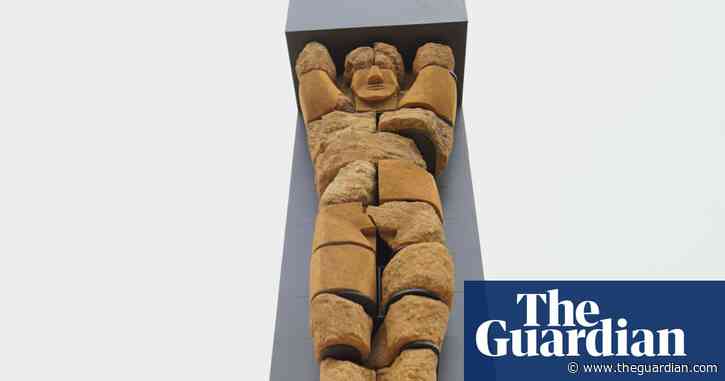 Eight-metre statue dating from fifth century BC restored and assembled piece-by-piece to be displayed in Valley of the TemplesA colossal statue of Atlas that lay buried for centuries among ancient ruins has been reconstructed to take its rightful place among the Greek temples of Agrigento in Sicily, after a 20-year research and restoration project.The statue, standing at 8 metres (26ft) tall and dating back to the fifth century BC, was one of nearly 38 that adorned the Temple of Zeus, considered
Eight-metre statue dating from fifth century BC restored and assembled piece-by-piece to be displayed in Valley of the TemplesA colossal statue of Atlas that lay buried for centuries among ancient ruins has been reconstructed to take its rightful place among the Greek temples of Agrigento in Sicily, after a 20-year research and restoration project.The statue, standing at 8 metres (26ft) tall and dating back to the fifth century BC, was one of nearly 38 that adorned the Temple of Zeus, considered -
‘Highway to horror’: 14 wrecked slavers’ ships are identified in Bahamas
via theguardian.com Largest cluster of sunken vessels from the 18th and 19th centuries have been identified, bearing ‘silent witness’ to the colonial pastThey were the ships that carried enslaved Africans on hellish transatlantic voyages through the 18th and 19th centuries, with up to 400 in a single vessel. Now the wrecks of 14 ships have been identified in the northern Bahamas, marking what has been described by a British marine archaeologist as a previously unknown “highway to horror”.The
Largest cluster of sunken vessels from the 18th and 19th centuries have been identified, bearing ‘silent witness’ to the colonial pastThey were the ships that carried enslaved Africans on hellish transatlantic voyages through the 18th and 19th centuries, with up to 400 in a single vessel. Now the wrecks of 14 ships have been identified in the northern Bahamas, marking what has been described by a British marine archaeologist as a previously unknown “highway to horror”.The -
‘A Neolithic miracle’: readers’ favourite ancient UK sites
via theguardian.com Our tipsters celebrate our distant ancestors at mystical and atmospheric sites from County Fermanagh to CornwallCratcliffe and Robin Hood’s Stride are a collection of gritstone crags and boulders nestled against a Derbyshire hillside not far from Bakewell. It’s a beautiful place with a magical feel. Carved into the base of the cliff is a small chapel – the “hermit’s cave” – and in the next field, the Nine Stones Close stone circle is over two metres high
Our tipsters celebrate our distant ancestors at mystical and atmospheric sites from County Fermanagh to CornwallCratcliffe and Robin Hood’s Stride are a collection of gritstone crags and boulders nestled against a Derbyshire hillside not far from Bakewell. It’s a beautiful place with a magical feel. Carved into the base of the cliff is a small chapel – the “hermit’s cave” – and in the next field, the Nine Stones Close stone circle is over two metres high -
‘Very rare’ clay figurine of Mercury discovered at Roman site in Kent
via theguardian.com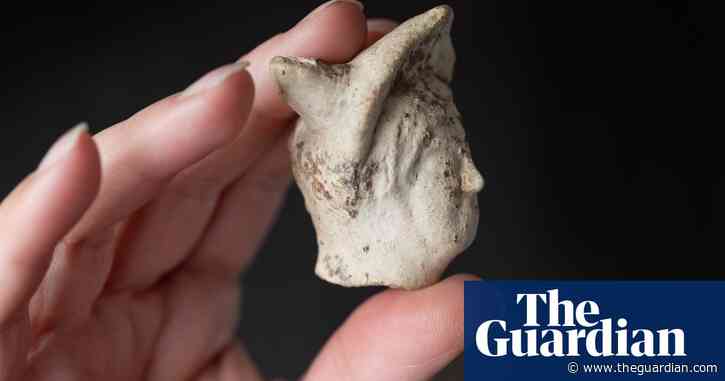 Previously unknown settlement in Small Hythe was once an important infrastructure linkA “very rare” clay figurine of the god Mercury, one of fewer than 10 ever found in Britain, has been discovered at a previously unknown Roman settlement that once sat next to a busy port – but is now 10 miles from the sea.The site of the settlement, in the modern hamlet of Small Hythe (or Smallhythe), near Tenterden in Kent, now sits among fields, but was once an important link in the Roman em
Previously unknown settlement in Small Hythe was once an important infrastructure linkA “very rare” clay figurine of the god Mercury, one of fewer than 10 ever found in Britain, has been discovered at a previously unknown Roman settlement that once sat next to a busy port – but is now 10 miles from the sea.The site of the settlement, in the modern hamlet of Small Hythe (or Smallhythe), near Tenterden in Kent, now sits among fields, but was once an important link in the Roman em -
Solar storms, ice cores and nuns’ teeth: the new science of history
via theguardian.com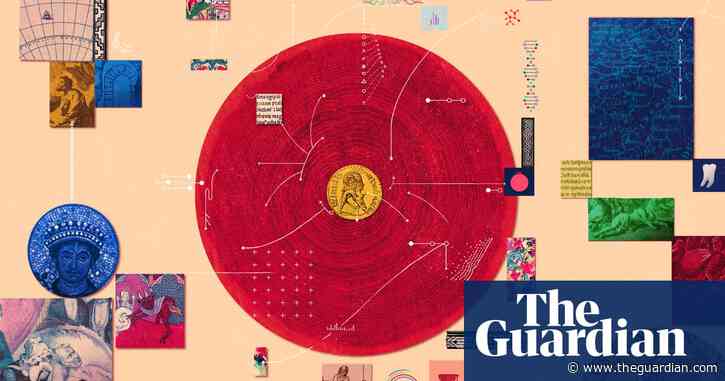 Advances in fields such as spectrometry and gene sequencing are unleashing torrents of new data about the ancient world – and could offer answers to questions we never even knew to askScythians did terrible things. Two-thousand five-hundred years ago, these warrior nomads, who lived in the grasslands of what is now southern Ukraine, enjoyed a truly ferocious reputation. According to the Greek historian Herodotus, the Scythians drank the blood of their fallen enemies, took their heads back
Advances in fields such as spectrometry and gene sequencing are unleashing torrents of new data about the ancient world – and could offer answers to questions we never even knew to askScythians did terrible things. Two-thousand five-hundred years ago, these warrior nomads, who lived in the grasslands of what is now southern Ukraine, enjoyed a truly ferocious reputation. According to the Greek historian Herodotus, the Scythians drank the blood of their fallen enemies, took their heads back -
Ancient faces brought back to life at Scottish museum – video
via theguardian.com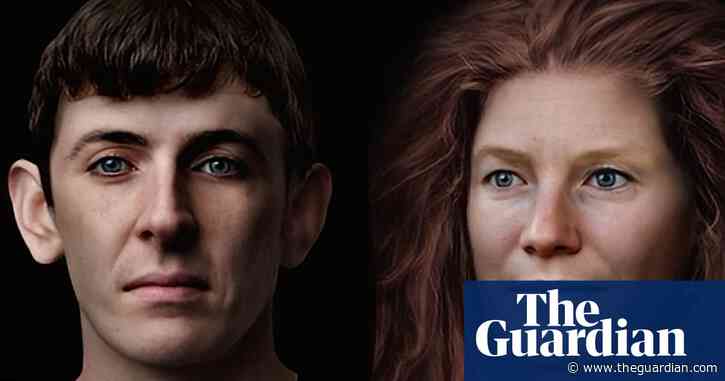 A bronze age woman who suffered lower back pain 4,000 years ago and an iron age Pictish man who lived a life of hard labour 1,500 years ago are among our ancient ancestors who have been brought to life in dramatic facial reconstructions. Cutting-edge technology will enable visitors to Scotland’s new Perth Museum to come face to face with four individuals from our past in modern-day PerthshireAncient faces brought back to life at Scottish museum Continue reading...
A bronze age woman who suffered lower back pain 4,000 years ago and an iron age Pictish man who lived a life of hard labour 1,500 years ago are among our ancient ancestors who have been brought to life in dramatic facial reconstructions. Cutting-edge technology will enable visitors to Scotland’s new Perth Museum to come face to face with four individuals from our past in modern-day PerthshireAncient faces brought back to life at Scottish museum Continue reading... -
Ancient faces brought back to life at Scottish museum
via theguardian.com Dramatic reconstructions of local people who lived up to 4,000 years ago will go on display thanks to advanced DNA techniquesA Bronze Age woman who suffered lower back pain 4,000 years ago and an Iron Age Pictish man who lived a life of hard labour 1,500 years ago are among our ancient ancestors who have been brought to life in dramatic facial reconstructions.Cutting-edge technology will enable visitors to Scotland’s new Perth Museum to come face to face with four individuals from our past
Dramatic reconstructions of local people who lived up to 4,000 years ago will go on display thanks to advanced DNA techniquesA Bronze Age woman who suffered lower back pain 4,000 years ago and an Iron Age Pictish man who lived a life of hard labour 1,500 years ago are among our ancient ancestors who have been brought to life in dramatic facial reconstructions.Cutting-edge technology will enable visitors to Scotland’s new Perth Museum to come face to face with four individuals from our past -
Egypt scraps plan to restore cladding on one of three great pyramids of Giza
via theguardian.com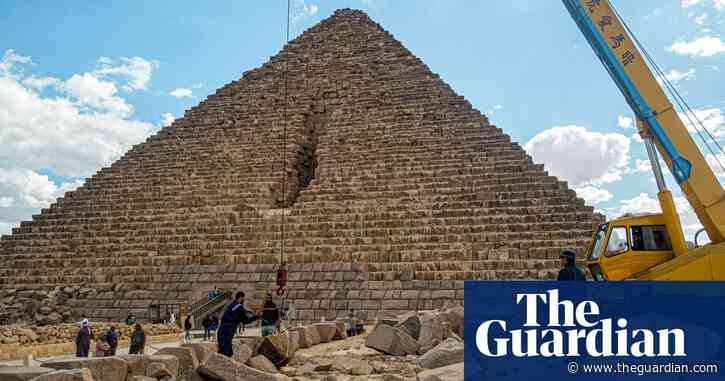 Antiquities authority drops proposal for Menkaure pyramid after review prompted by international outcryEgypt has scuttled a controversial plan to reinstall ancient granite cladding on the pyramid of Menkaure, the smallest of the three great pyramids of Giza, a committee formed by the country’s tourism minister said in a statement.Mostafa Waziri, the secretary general of the supreme council of antiquities, announced the plan last month, declaring it would be “the project of the centur
Antiquities authority drops proposal for Menkaure pyramid after review prompted by international outcryEgypt has scuttled a controversial plan to reinstall ancient granite cladding on the pyramid of Menkaure, the smallest of the three great pyramids of Giza, a committee formed by the country’s tourism minister said in a statement.Mostafa Waziri, the secretary general of the supreme council of antiquities, announced the plan last month, declaring it would be “the project of the centur -
David Hawkins obituary
via theguardian.com David Hawkins, my colleague and friend, who has died aged 83, was one of the world’s leading scholars of the languages of ancient Turkey.He spent all his career at Soas University of London. He was appointed fellow in Hittite at Soas in 1964 and retired as professor in 2005. Hittite, the oldest known Indo-European language, was then only taught at Oxford, by Oliver Gurney, to whom David went to learn the language in which he had been appointed. Continue reading...
David Hawkins, my colleague and friend, who has died aged 83, was one of the world’s leading scholars of the languages of ancient Turkey.He spent all his career at Soas University of London. He was appointed fellow in Hittite at Soas in 1964 and retired as professor in 2005. Hittite, the oldest known Indo-European language, was then only taught at Oxford, by Oliver Gurney, to whom David went to learn the language in which he had been appointed. Continue reading...
Follow @archaeology_uk1 on Twitter!

